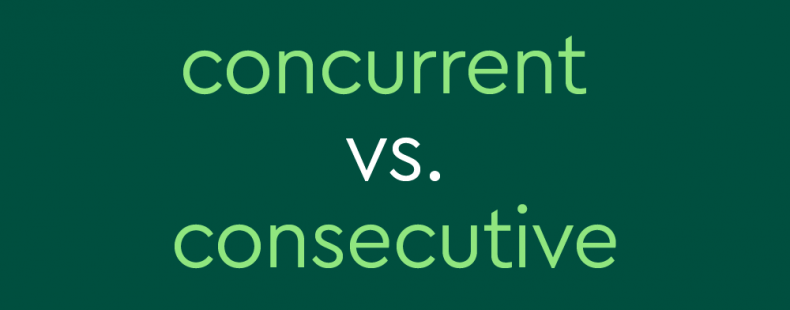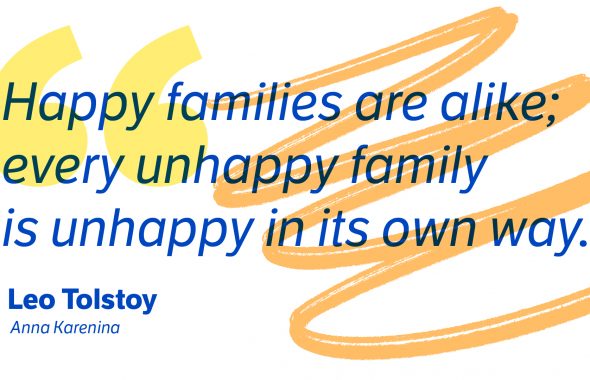You’ve probably noticed that there’s a lot going on in the world right now, and you may have noticed people using words like concurrent and consecutive to describe these events. That’s fitting, because they’re used to describe things happening at the same time or one after another.
It can be easy to forget exactly when each one should be used, so we’re here to help explain the difference between concurrent and consecutive and even review similar words such as simultaneous, successive, and nonconsecutive.
⚡ Quick summary
Concurrent is used to describe events that happen at the same time. Consecutive is used to describe events that happen one after another.
What does concurrent mean?
Concurrent means “occurring or existing at the same time or side by side.”
For example, historians who specialize in a specific event often study that event in relation to the concurrent events of the time—those that happened alongside it. A venue hosting two concurrent weddings is hosting them at the same time (hopefully in separate spaces).
The word simultaneous is often used to mean the same thing. Simultaneous is perhaps more commonly applied to shorter periods or events to imply that two things are happening at the exact same time, perhaps even starting and ending at the same time. Concurrent is often applied to longer events and used a bit more broadly to indicate that two events overlap in some way, such as occurring within the same range of time without being completely simultaneous.
The adverb form is concurrently, as in The classes will be held concurrently, so I can take both in the same semester.
Concurrent also has several other less common meanings, including “agreeing” (as in concurrent testimony), “cooperating” (as in concurrent efforts), “intersecting” (as in concurrent lines). In general, concurrent implies that things are side by side in some way.
What does consecutive mean?
Consecutive means “following one another in uninterrupted succession or order.” Generally speaking, the word applies to things in a sequence without breaks or gaps between them: 1, 2, 3, 4 are consecutive numbers.
In the context of events, consecutive means things happen one after another. A less formal synonym is back to back. The word successive means the same thing but is less commonly used.
A person who has four consecutive meetings has four straight meetings without any breaks between them. Six consecutive days means six days in a row. Saying that a team won two consecutive championships means that they won two championships back-to-back.
The adverb is consecutively, as in The concerts at the festival are held consecutively, not at the same time, so we’ll be able to see every performance.
The opposite, nonconsecutive, applies to things that don’t follow in a sequence. For example, a person might book four nonconsecutive nights in a hotel—meaning that they will be staying in the hotel for a total of four nights, but not four nights in a row (perhaps because they are taking some excursions during which they will stay elsewhere).
Consecutive also has some more specific and less commonly used meanings. It can mean “marked by logical sequence.” In grammar, it’s used in the term consecutive clause, which is a clause that expresses consequence or result.
Where do concurrent and consecutive come from?
Concurrent and consecutive start the same way, with con-, meaning “together.” Concurrent ultimately comes from the Latin verb currere, “to run,” while consecutive comes from the Latin verb sequī, meaning “to follow” (the word sequence is based on the same root).
So concurrent events are those that run together, while consecutive events are those that follow each other.
Looking for more? Learn the difference between concave and convex.
How to use concurrent vs. consecutive
Concurrent means multiple things are happening at the same time or during the same window of time. Consecutive means multiple things are happening one after the other, in sequence.
If you have two consecutive meetings, you have two meetings back to back. If you have two meetings scheduled for the same time, you could use the word concurrent, but you’re more likely to use the word simultaneous. Concurrent is more likely to be applied to things that happen within the same period of time, such as concurrent courses during a semester in school or concurrent revolutions during an era in history.
To remember the difference, think about the current in concurrent—concurrent can apply to events that are both currently happening. On the other hand, the middle part of the word consecutive is related to the word sequence—in which one thing follows another.
Examples of concurrent and consecutive used in a sentence
Here are some example sentences that use concurrent and consecutive in typical ways.
- Lawn-mowing season is concurrent with wasp season, as you have sadly discovered.
- To have virtual and in-person classes be concurrent is extremely challenging for teachers.
- After working for eight consecutive days, she was relieved to finally have a day off.
- No team in this league has ever won five consecutive championships.
- The screenings were originally scheduled to be concurrent, but they will now be consecutive as part of a movie marathon.














